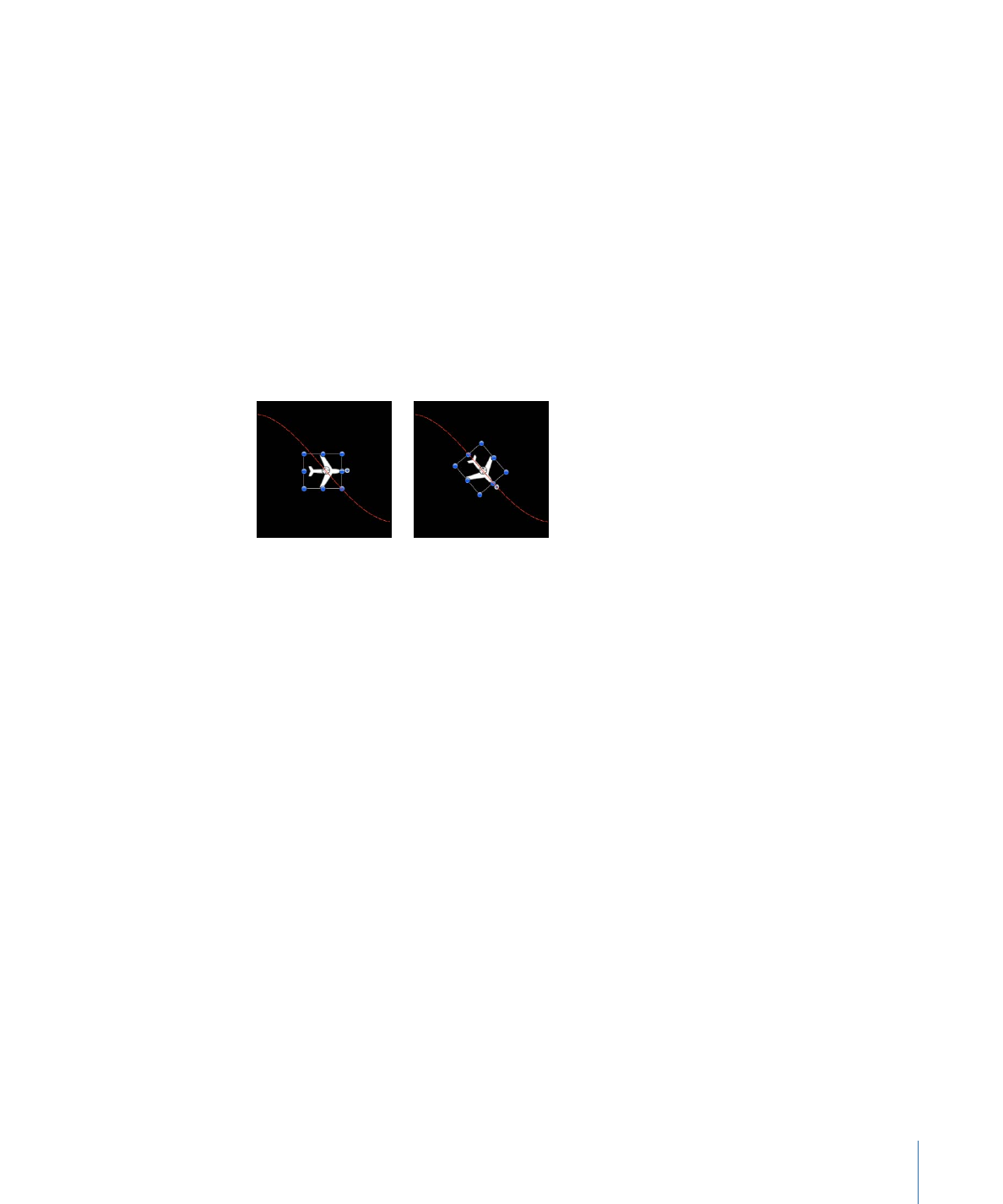
Simulation Behaviors
These behaviors perform one of two tasks. Some Simulation behaviors, such as Gravity,
animate the parameters of an object in a way that simulates a real-world phenomenon.
Other Simulation behaviors, such as Attractor and Repel, affect the parameters of objects
surrounding the object to which they’re applied. These behaviors allow you to create
some very sophisticated interactions among multiple objects in your project with a
minimum of adjustments. Like the Basic Motion behaviors, Simulation behaviors also
affect specific object parameters. Examples include Attractor, Gravity, and Repel.
Important:
Several Simulation behavior parameters contain object wells into which you
drag target objects used as attractors, repellers, orbiters, and so on. Dragging an object
to a well can be tricky—be sure to click the object name in the Layers list and immediately
drag the object to the object well (without releasing the mouse button). The behavior
must remain active even though you are dragging another object in the Layers list. If you
click the object in the Layers list and release the mouse button, that object becomes
selected, and the behavior’s parameters are no longer displayed. This applies to all wells,
including mask source and image wells.
The following sections cover the Simulation behaviors:
•
Align To Motion
•
Attracted To
•
Attractor
•
Drag
•
Drift Attracted To
•
Drift Attractor
•
Edge Collision
•
Gravity
•
Orbit Around
•
Random Motion
•
Repel
•
Repel From
•
Rotational Drag
450
Chapter 9
Using Behaviors

•
Spring
•
Vortex
•
Wind